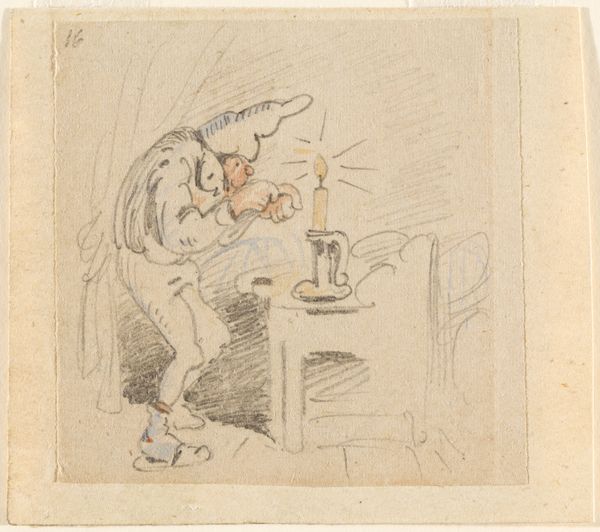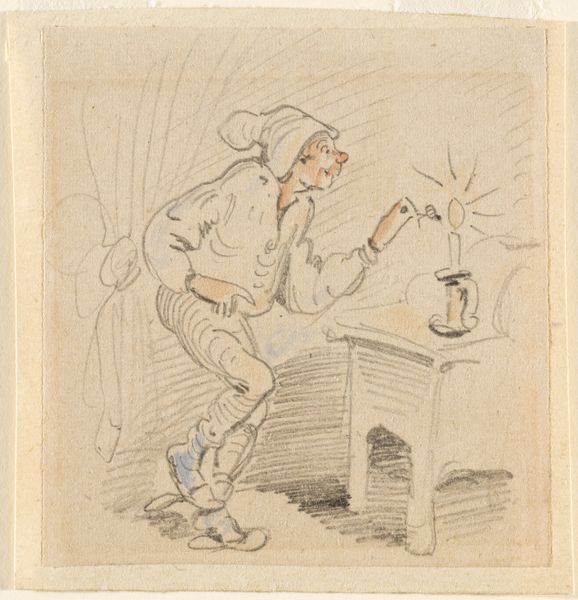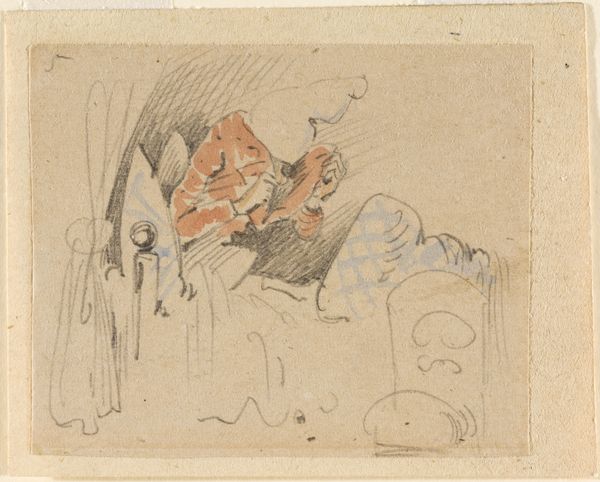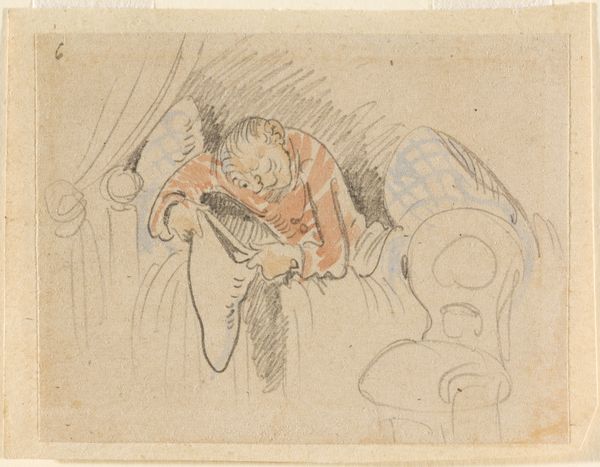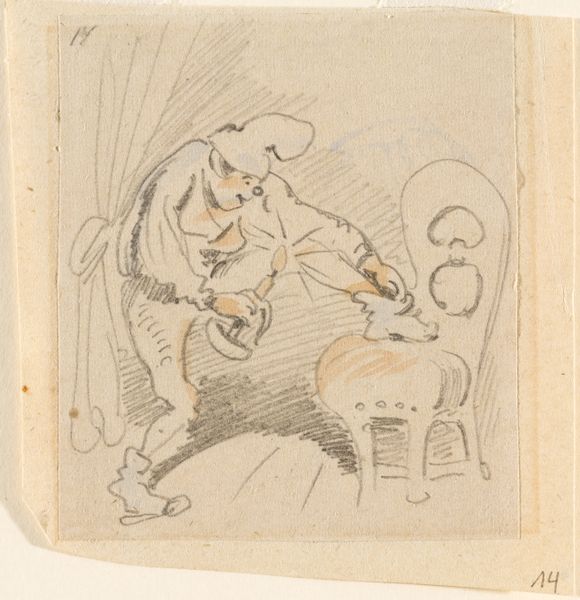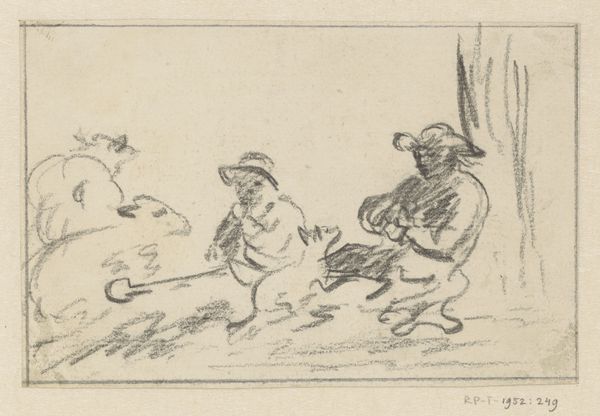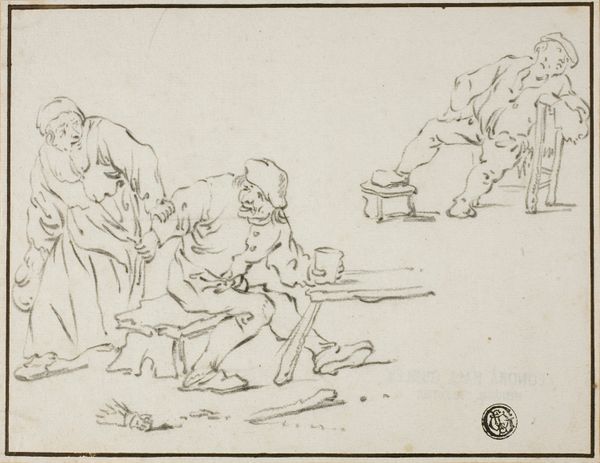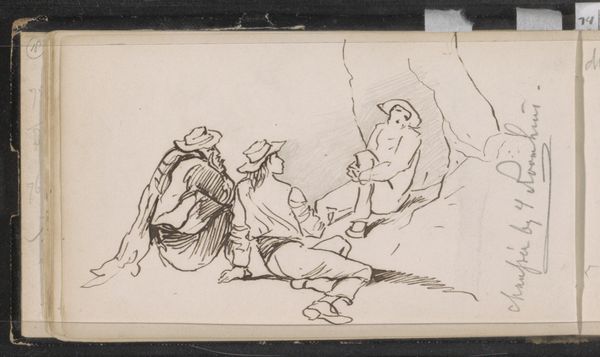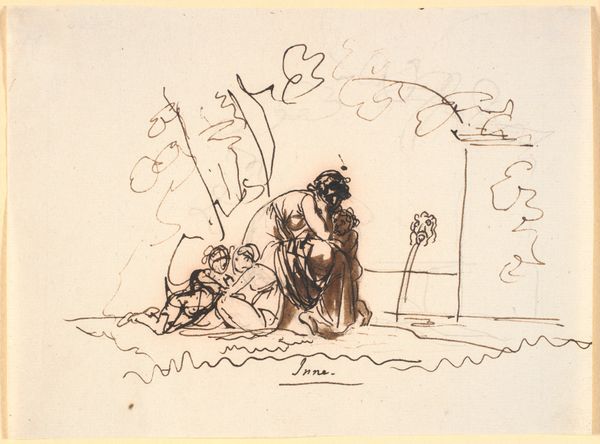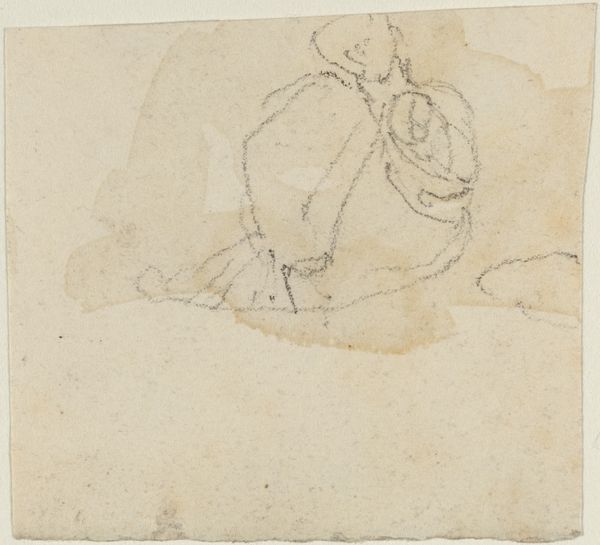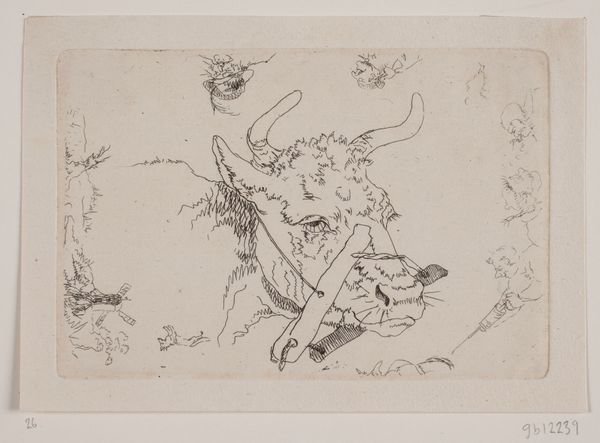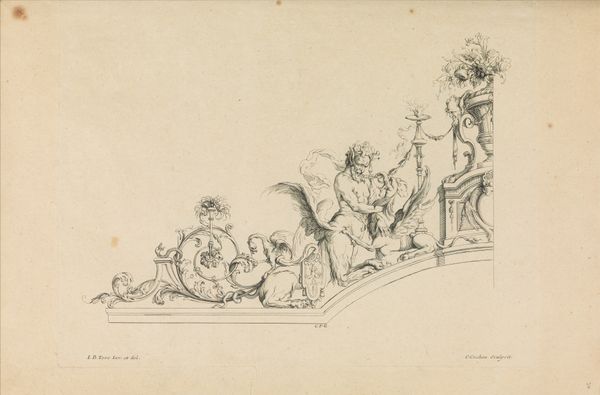
Die gestörte, aber glücklich wieder errungene Nachtruhe (Der Floh); 15 1862
0:00
0:00
Copyright: Public Domain
Curator: This drawing, housed here at the Städel Museum, is by Wilhelm Busch. It's titled "Die gestörte, aber glücklich wieder errungene Nachtruhe (Der Floh); 15," which translates to "The Disturbed, but Happily Regained Night's Rest (The Flea); 15." Busch created it around 1862 using pencil. Editor: My first impression is a sketch imbued with playful awkwardness, almost comical. The tilted perspective adds to its charm. The minimal color palette—mostly shades of gray with the little pops of orange and blue—gives it an antique feel, while the lines emphasize the contours to reveal the artist’s focus on form. Curator: The theme here—genre painting—adds historical context. The commonness of everyday experience as worthy subject. Busch really isolates the figure in this sketch. Notice his placement, occupying the left half of the composition and contrasted with the radiating lines around the lamp—this emphasizes the theme of disturbed rest, placing the event as primary in the picture. Editor: Absolutely. Fleas are universally pesky, symbols of irritation and lost tranquility! The image taps into that common anxiety, doesn't it? This resonates even today. He’s also depicted wearing what appears to be a nightcap. We find him roused to resolve his disturbance at its source. Curator: Considering Romanticism's stress on personal experience and emotion, Busch's approach highlights individual struggle—both in the agitated pose and then in that very faint almost victorious stance of resolution. Look at the gestural energy of the sketch, it certainly communicates immediate emotional states that conform with Romantic ideologies! Editor: And, beyond personal unease, fleas could symbolize wider social anxieties of the 19th century—concerns about hygiene, disease, class division. It’s like the intimate frustration mirrors larger societal disturbances. Curator: Fascinating thought! Though executed in a simple medium, the narrative is effectively told through composition and implied movement alone! Editor: Overall, it is a window into both personal inconvenience and potentially larger, socially relevant disturbance and resolve. Busch cleverly conveys all these elements, simply! Curator: Well, through this short study, we see a fusion of formal elements with emotional symbolism.
Comments
No comments
Be the first to comment and join the conversation on the ultimate creative platform.
